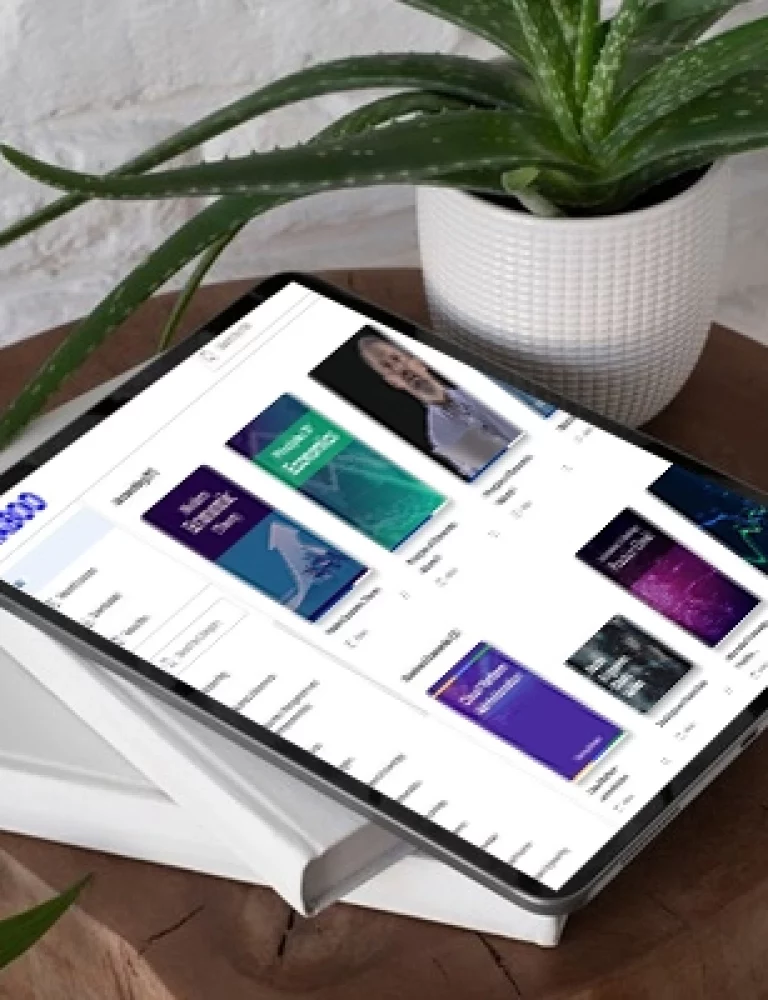In recent years, technology has played a pivotal role in democratizing education, making it more accessible to students worldwide. Owing to this fact, eBooks have risen to be one of the most convenient ways of delivering learning to a classroom.
eBooks enable teachers to streamline lesson delivery and track student progress at an individual level while simultaneously reducing the consequent effort required. Especially with digital textbook platforms like KITABOO, it is possible to curate exceptional learning experiences for students.
However, in order to enhance the overall student learning outcomes from the said eBooks, certain specialized strategies are required. In this post, we discuss 8 key strategies for crafting engaging eBooks that will help you improve the learning experience for your students. Read on!
Table of Contents:
I. Decoding Student Learning: Factors That Influence Engagement
II. 8 Key Strategies to Create Engaging eBooks to Enhance Student Learning
Decoding Student Learning: Factors That Influence Engagement
To design eBooks that engage, it is first important to understand the driving aspects that have an impact on student engagement.
Studies show that there are three main factors that drastically impact student engagement:
- Behavioral factors: The aspects that influence student behavior like persistence, concentration, curiosity, etc.
- Emotional factors: The aspects that involve participation, interpersonal relationships, and collaborative, peer-to-peer learning.
- Cognitive factors: The aspects that involve psychological evolution through the learning journey that enhances understanding and perspective.
A well-designed eBook is able to drive high learning outcomes and better engagement by addressing all three factors discussed above. A strategy that combines the said elements creates an eBook that has a positive influence on student learning.
In this context, digital textbook platforms like KITABOO play a crucial role in providing interactive and engaging educational content. It enables educators to create and curate content depending on specific learning objectives while taking into consideration the diverse needs of students.
8 Key Strategies to Create Engaging eBooks to Enhance Student Learning
A good eBook is able to improve learning outcomes by creating engagement for all types of learners. It has elements and features that make the learning experience not just streamlined and accessible but stimulating and rewarding as well.
Below are 8 strategies that will help you craft a well-rounded eBook that performs on all fronts:
1. Choose Your Software Wisely
There are countless ways to create an eBook, for example, by typing down the text in text-based software and converting it into a simple PDF. However, in order to create an eBook that is engaging, you need dedicated software that provides features like eBook customization, centralized and governance-based access controls, collaboration features, and more.
Additionally, modern eBook publishing software enables educators to create eBooks with elements of engagement, like quizzes, gamification, animations, sound effects, and more.
Selecting the right software is essential to creating engaging eBooks. It not only streamlines the eBook creation process but also enhances the overall learning experience for students.
2. Use Visual Media
Vision is the primary source of information for human beings. That said, there are several “types” of visual cues that the human brain is wired to process faster as compared to text. This fact applies to images, which the human brain processes 60,000 times quicker than text, according to the International Forum of Visual Practitioners.
If you wish to enhance learning engagement through eBooks, consider inserting information in the form of easily comprehensible graphics in place of using full-scale text. Not only will the students find it more engaging to read, but it will also help them skim through the facts quicker.
Especially when it comes to the realm of higher education, where complex concepts are often conveyed, leveraging visual media becomes crucial. This helps learners grasp complex ideas more efficiently and aids in the retention of information.
3. Introduce Interactive Elements
Interactivity enables students to explore the eBook in more detail. For example, in a language lesson, students can click on a word and expand it to view information cards that show its pronunciation, meaning, and possible synonyms that help them learn better. It inevitably leads to more favorable and better learning outcomes, as highlighted in the study.
Studies show that leveraging interactive eBooks generated a mean test score of 81.69 as compared to 64.75 when using standard methods. This highlights the effectiveness of incorporating interactive elements into the learning process.
4. Leverage Gamification
Gamification improves the learning experience by introducing fun ways of learning subjects. For example, a historical architecture lesson can be made more agreeable by converting it into a gamified simulation that students can experience firsthand instead of trying to imagine it.
5. Consider Lesson Personalization
On first thought, it may not seem that lesson personalization would have any impact on student learning. However, when students have tools to bookmark their progress, set their difficulty levels, and pace their lessons, they are able to experience a more rewarding learning journey. Adding these features to an eBook drastically enhances student engagement in the modules.
Students pursuing higher education find it beneficial when they have control over their learning experience. This way, they can adapt their studies to align with their unique learning preferences and pace.
6. Enhance Accessibility
Accessibility features like text to speech, transcription, translation, and more enable all types of students to use an eBook to its maximum. These features help level the learning field, empowering students to match their progress with their peers by using assistive technology to stay in the competition.
Accessibility also enables students to access their eBooks on any device, anywhere.
7. Add Functionality
eBooks aren’t merely digital textbooks that enable “consumption” of information. Enhancing their functionality helps improve the learning outcome they deliver. By adding features like shared annotations, shared note-taking, and discussions, an eBook can be converted into a dynamic learning tool that students can use for peer-to-peer learning sessions. It has tremendous potential to enhance student engagement.
8. Make Customization Easy
Simple customization options like screen brightness, text size, backlighting, contrast, magnification, etc., help retain students on the reading platform. Students are empowered to enhance the readability and usability of their eBooks using these features. Additionally, some eBook platforms enable customizing media compatibility for devices the students use by allowing a selection of formats.
KITABOO, a unique digital textbook platform, makes this process seamless by offering a range of easy-to-use customization features. It enables students to tailor their reading experience according to their preferences.
Transform Education With Engaging, High-Quality eBooks!
Anyone can create an eBook. However, crafting an eBook that engages, educates, and retains students at the same time requires thorough strategizing and a powerful platform that is equipped with modern education features.
KITABOO is a digital textbook platform that empowers educators and educational institutions with advanced features for eBook creation, like the incorporation of multimedia elements, reading and engagement analytics, white labeling, and DRM protection. Educators can unleash the full potential of eBooks to transform book-based learning into a fun, educative experience.
Write to us at KITABOO@hurix.com for more details!
Discover How An Ebook Conversion, Publishing & Distribution Platform Can Help You
Kitaboo is a cloud-based content platform to create-publish & securely distribute interactive mobile-ready ebooks.
You May Also Like








